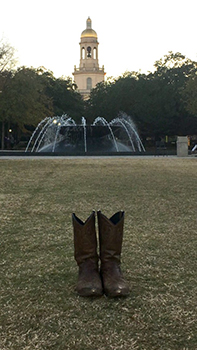Globally, close to a million babies die within the first week of life from simple and preventable breathing issues, known as birth asphyxia. Many infants would respond to resuscitative measures if this lack of oxygen during late-term labor were recognized. To ameliorate this problem, the American Academy of Pediatrics and World Health Organization have collaborated to develop Helping Babies Breathe, a program to prepare nurses, midwives, and skilled birth attendants with simple yet lifesaving skills.

With the help of a BU Missions research grant, the support of Dean Shelley Conroy, and the leadership of Dr. Lori Spies and Dr. Cheryl Riley, nurses from Baylor University’s School of Nursing have and are continuing to initiate sustainable culturally congruent initiatives by working with global agencies and existing well-established regional partners in Ethiopia, India, Vietnam, and Zambia. LHSON nurses provide Helping Babies Breathe workshops and equip partners with the necessary tools to help babies breathe. Conducting Helping Babies Breathe workshops to APNs, nurses, midwives, and traditional birth attendants can increase workforce capacity and provide training for basic newborn care in vulnerable populations. Incorporating the Helping Babies Breathe program into existing research, clinical courses, and service learning global endeavors led by Advanced Practice Nurses can significantly contribute to decreased infant mortality.

An inspiring example from LHSON serves as a testament to the immense benefits of Helping Babies Breathe: after teaching in Langano, Ethiopia, an LHSON team traveled to remote Makki to teach Helping Babies Breathe. While the LHSON team was gone, a woman who was pregnant with twins and had placenta previa went into labor early at the Langano clinic. The first twin was born, and the woman was bleeding profusely. Nurses at the Langano clinic loaded her into the clinic van/ambulance and headed to the nearest hospital. The first hospital turned them away, so they headed to the second hospital, which meant 2-3 hours of driving. Meanwhile, the second twin was born blue and floppy. While a nurse worked to save the mother’s life, the clinic assistant/translator, who had attended LHSON’s Helping Babies Breathe course, was handed the second baby and immediately knew what to do. After performing the actions he had learned during training, the baby cried; the mother and her two children survived. Our Ethiopian colleagues attributed this baby’s survival to the LHSON team having taught the Helping Babies Breathe course.









